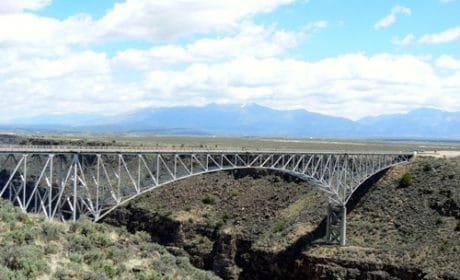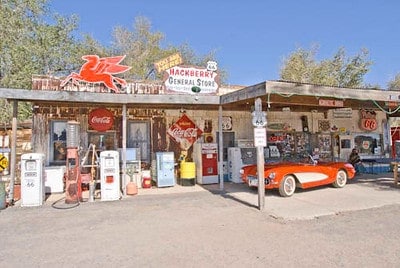Are you looking for a Massachusetts road trip steeped in history? While we encourage you to include hikes on your boomer road trips in your boomer travels, exploring history adds a deeper dimension to your trip.
The Boston, Massachusetts area abounds with historical sites. Guest contributor, Susmita Sengupta, takes us on an early American history tour filled with charming town squares, historic homes and intriguing museums.
An American history road trip in Massachusetts can be a delight and a boon for enthusiasts of bygone times. During a recent visit to Boston, my husband and I decided to avoid the oft-visited sights of the city to concentrate on a day trip to the smaller towns that lie just on its outskirts.
This Massachusetts road trip provided an intense lesson in early American history. We visited museums and historic spots with richly intertwined timelines combining America’s old and contemporary eras.
Table of Contents
Exploring Cambridge: Day One of a Massachusetts road trip
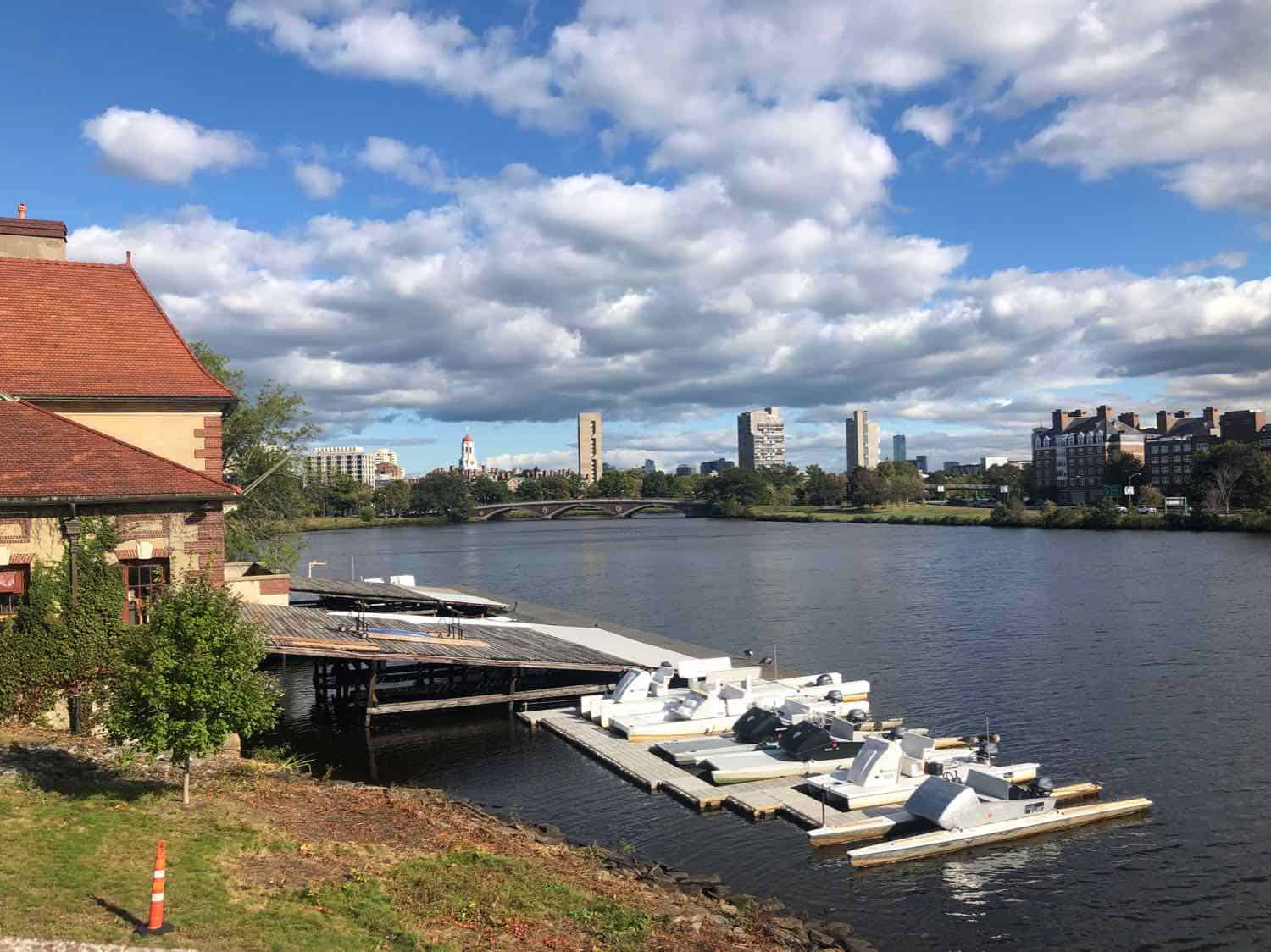
Our starting point was Cambridge, the august college town that’s home to Harvard University. The city is a forty-minute drive from Boston, but also easily reachable via public transport.
If you drive into Cambridge, you may find that parking spots are hard to come by but thankfully there are parking garages. We decided to make use of one in order to tour the town on foot.
Amid the intellectual centers of Harvard University are abundant servings of art and culture. At Harvard Art Museums, the troika of Fogg, Busch-Reisinger and Arthur M. Sackler Museums showcase an exhaustive collection of art and sculpture from around the world.
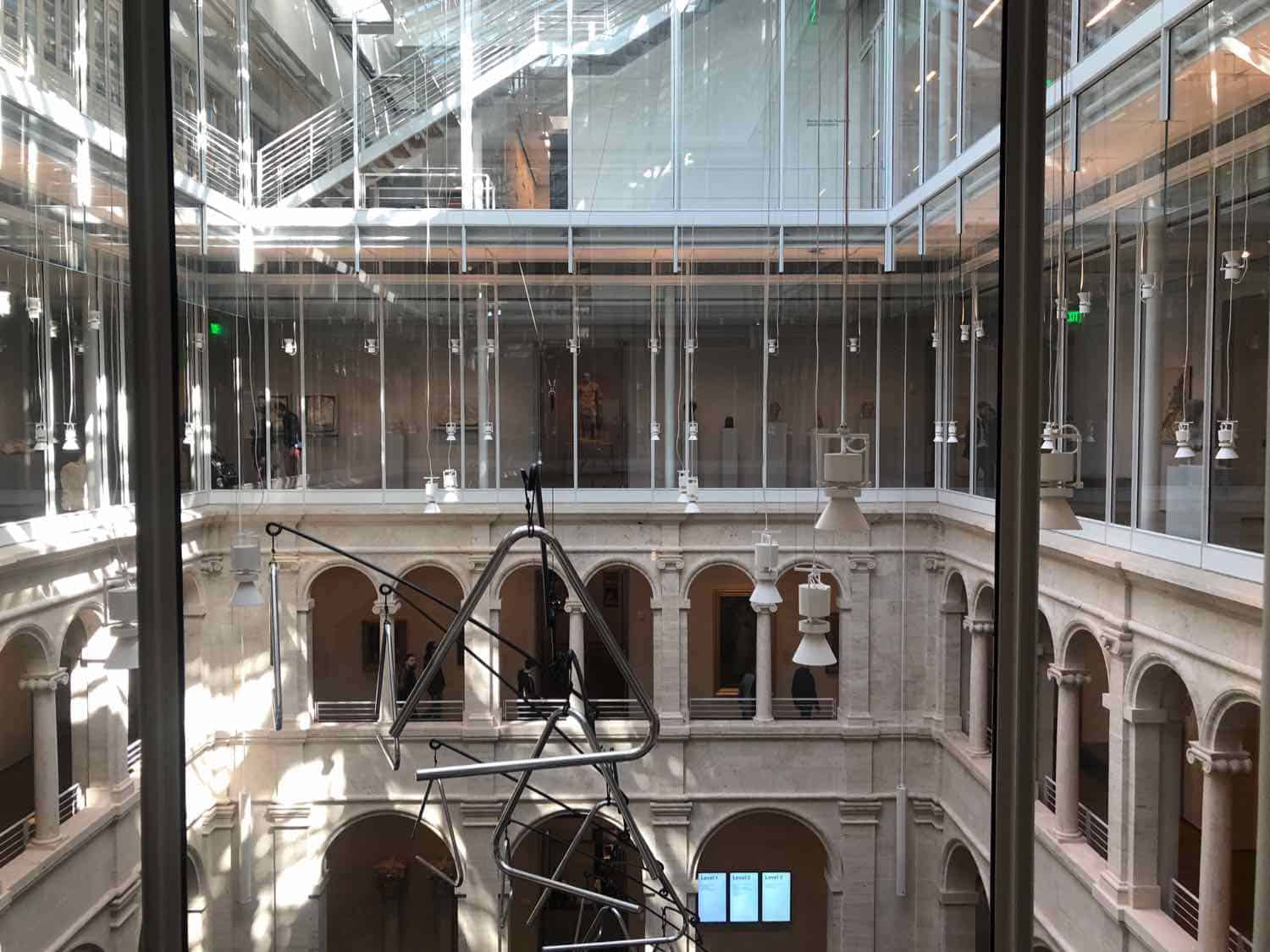
I walked into an impressive modern interior courtyard of the museum, bathed in sunlight due to its glass rooftop, where I admired the genius handiwork of the architect Renzo Piano. He renovated the entire space to turn the 19th century building into a stunning artwork in itself.
The permanent collection of European and Asian art is a breathtaking assemblage. The collection ranges from ancient Greek and Roman artifacts, Renoir to Rodin, Picasso, Miro and Alexander Calder to an enviable compilation of Chinese, Japanese and South Asian items.
The museum also holds special exhibitions. I was lucky enough to view a seminal one on Bauhaus, the early 20th century German avant garde movement that uniquely influenced architecture and design. With works by Walter Gropius, Marcel Breuer, Le Corbusier among others, the walk through was a design lover’s heaven.
Visiting the storied campus of Harvard University
I recommend spending some moments strolling through Harvard Yard to take in the timeless architecture of the colonial era red brick university buildings interspersed with leafy, green pathways. You can line up with other visitors to click a photo with the sculpted bronze statue of John Harvard, the third most photographed statue in the U.S.
Continue on to view the elegant Memorial Church and the Widener Library, complementing each other across the expansive lawn known as Tercentenary Theater. Commencement is held here come May.
Free historical tours led by students will provide a history of the university, or you can also do a self-guided walking tour.
Enjoying Harvard Square and the beauty of Charles River
Stepping out of the University gates will bring you to Harvard Square, historically founded in 1630 as Newtowne. Today the square bustles with Cambridge residents, Harvard students and tourists frequenting the many restaurants. You can also stop by The Coop, the University store, to purchase a memento from your visit.
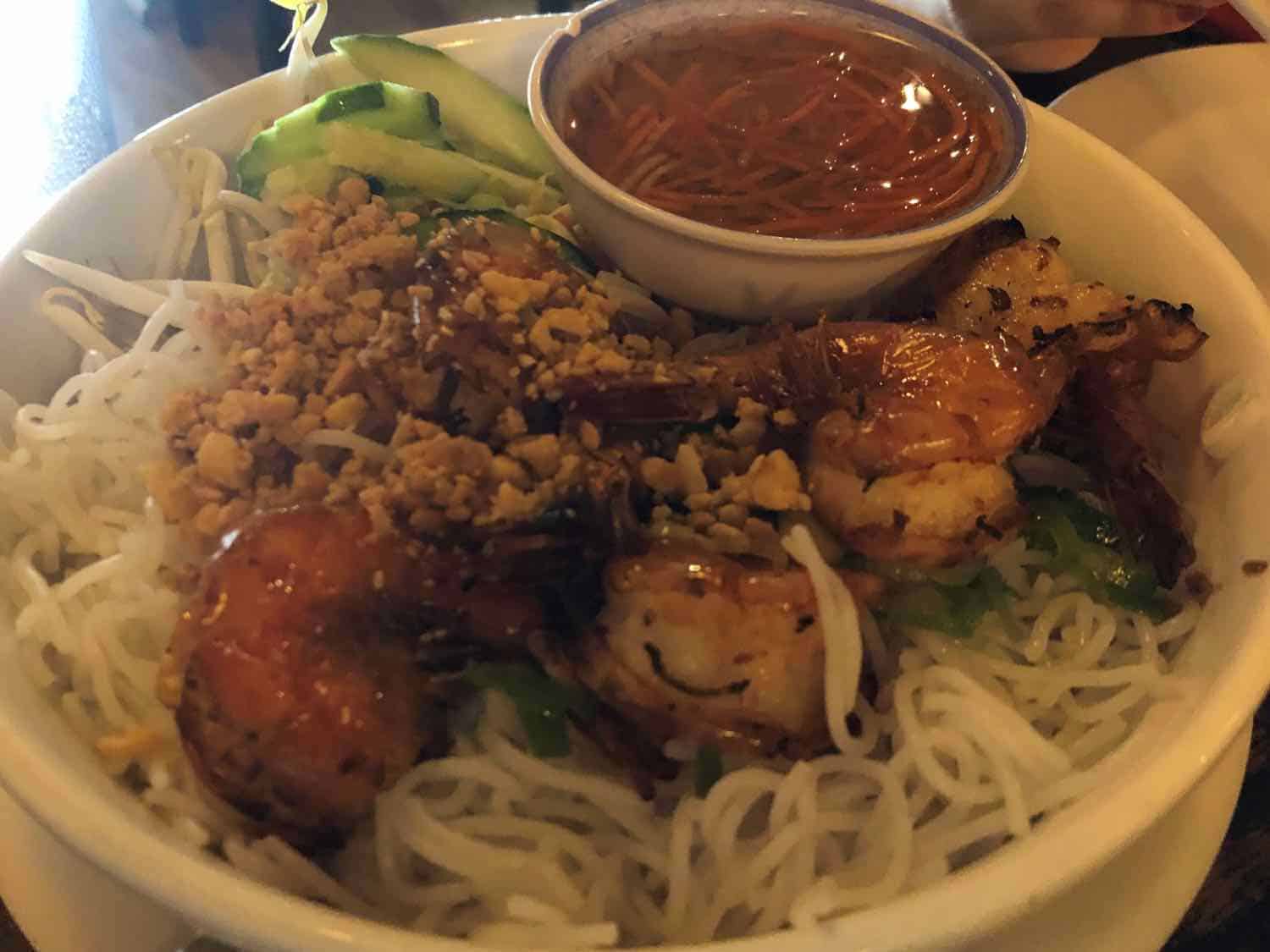
We ate our lunch at Le’s Vietnamese Restaurant in The Garage, a mini shopping mall of restaurants and shops inside a converted parking garage. We enjoyed our Vietnamese Pho, redolent with vegetables, seafood and noodles in a spicy broth and accompanied with deliciously crunchy spring rolls.
Comfortably satiated, it was time to walk over to the Anderson Memorial Bridge, revel in the calm magnificence of Charles River and perhaps watch Harvard rowing teams practicing their craft near The Weld Boathouse. Enjoy a sightseeing cruise along the 80 miles of the meandering river if you are so inclined.
Glimpsing an historical mansion on Brattle Street
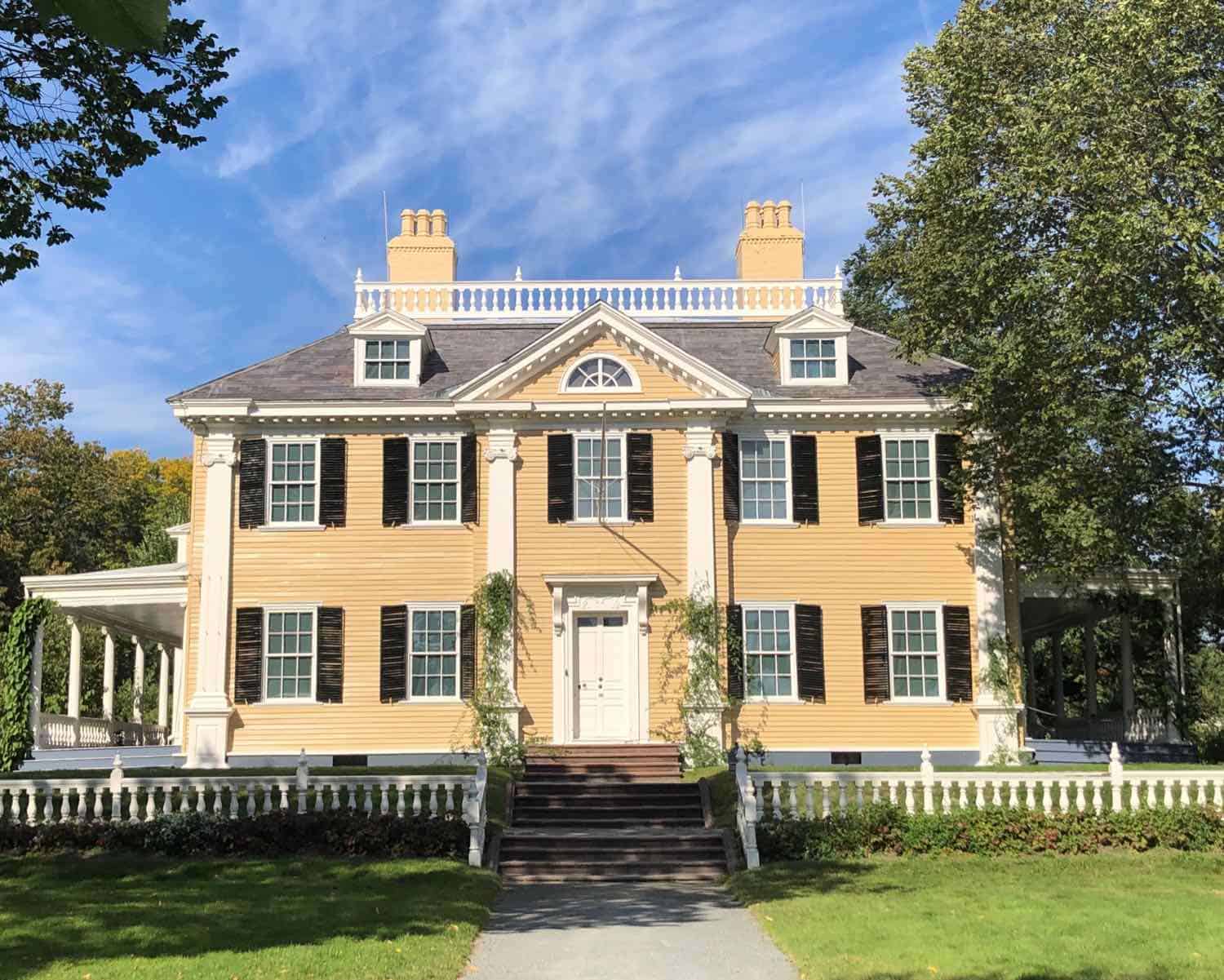
We could only glimpse the exterior of the famed Longfellow House owing to its specific opening days and times (May through October: Wednesdays through Sundays). If you visit on one of the recommended days, you can tour this historical Georgian mansion built in 1759. It was George Washington’s headquarters during the Siege of Boston from July 1775 to April 1776.
Afterwards, it became the residence of one of the most celebrated 19th century American poets, Henry Wadsworth Longfellow (1807-1882) who received the historical home as his wedding gift. Longfellow raised a family, taught at Harvard and composed and wrote many of his famous poems here.
The gardens, too, are worth a visit. They were originally designed by Longfellow and then reworked by his daughter Alice Longfellow. She commissioned the landscape architects Martha Brookes Hutcheson in 1903 and Ellen Biddle Shipman in 1923 to formalize the garden in the Colonial Revival style.
Exploring sites from Revolutionary War
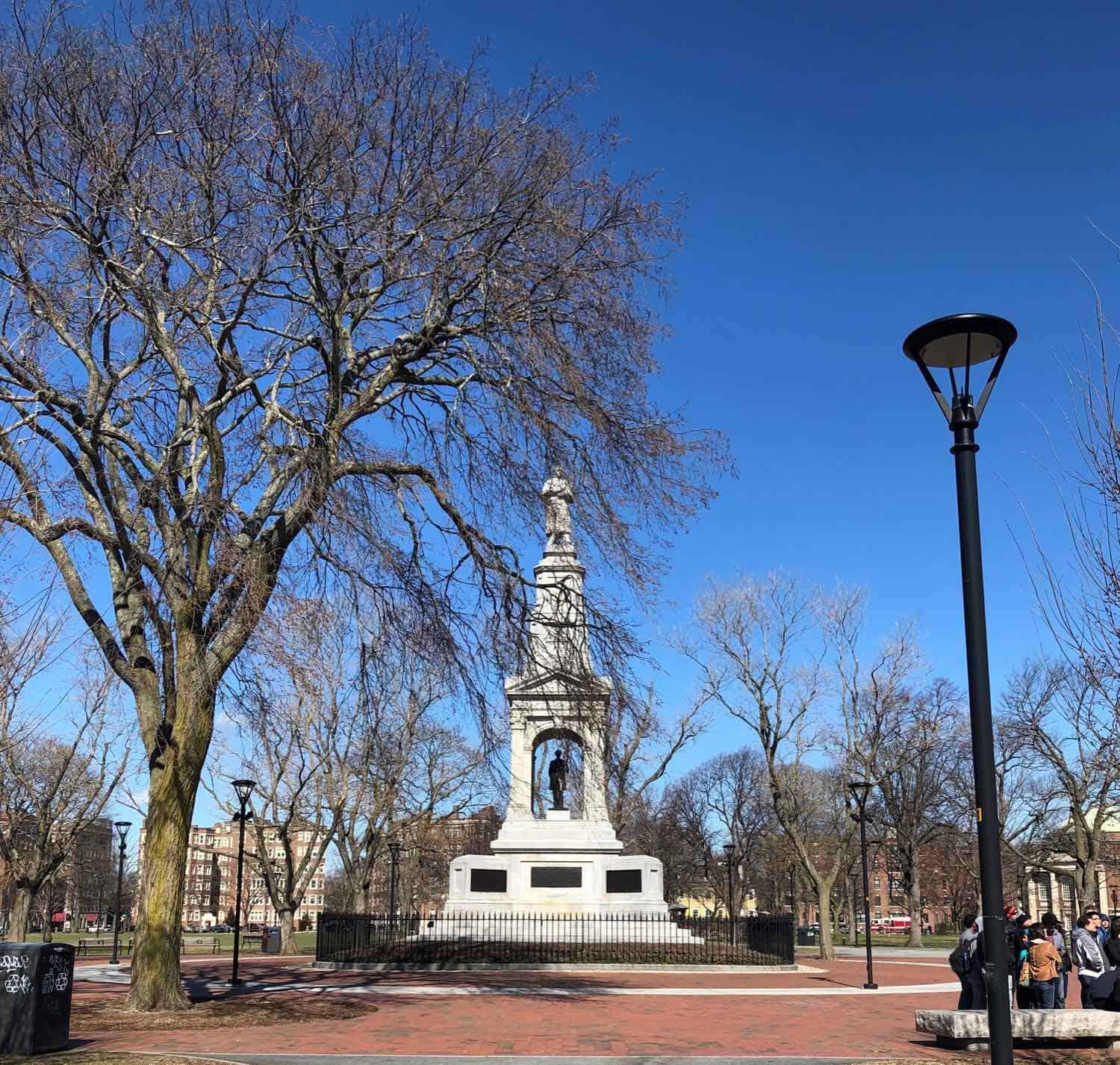
Cambridge is rich with sites from the Revolutionary War. We enjoyed a short stroll through Cambridge Common, today a lush park surrounded by the buildings of Harvard University, historic churches and houses.
The Common was the gathering spot for volunteer soldiers, commanded by George Washington in 1775 for the Revolutionary War, also known as the American Revolution. It’s memorialized at the park by plaques on history and three British cannons seized by the Continental Army.
See the First Church of Cambridge, a beautiful stone building with an impressive interior (established 1633-1636). Then gawk at the houses on “Tory Row” or Brattle Street, home to wealthy families before the American Revolution.
We walked by the cemetery next to the First Parish Church of Cambridge, located here since 1636. Known as Old Burying Ground, this was the resting place of numerous elite local figures associated with Harvard and other local towns. Further afoot is the more prominent Mt. Auburn Cemetery, a National Historic Landmark, being the first landscaped garden cemetery.
Delving into Lexington: Day 2 on our early American history road trip
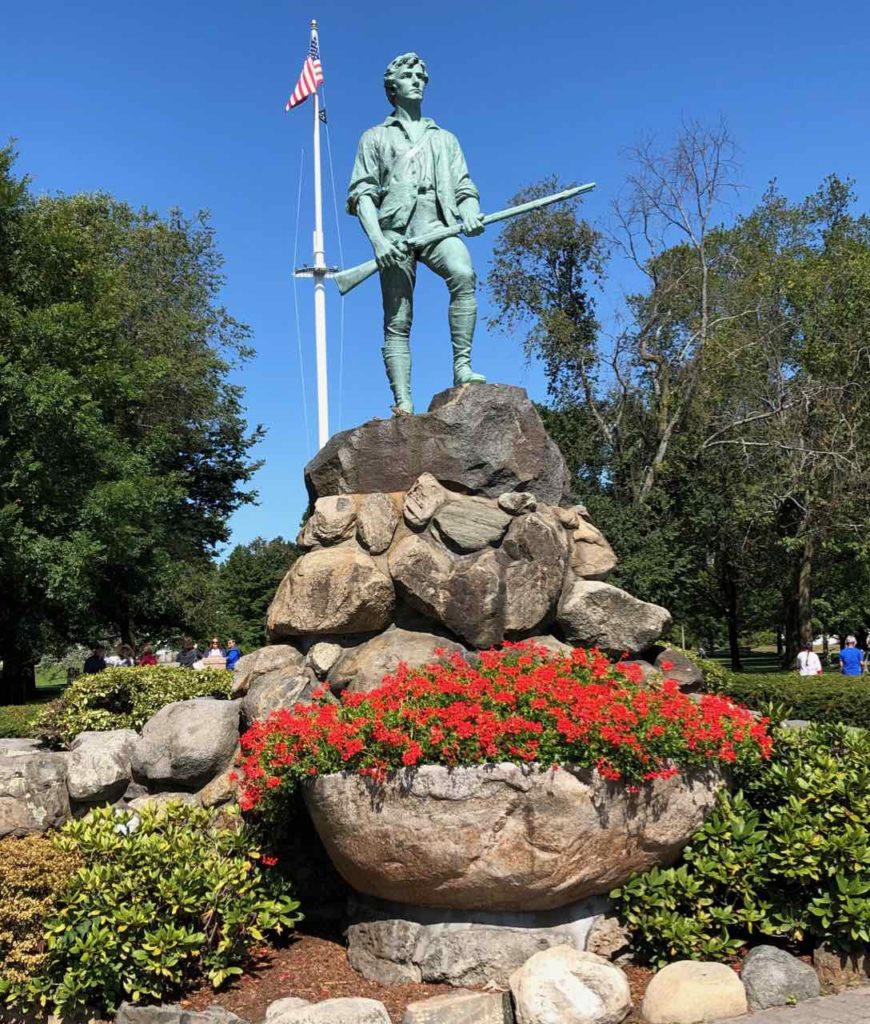
The next day we continued to follow the Revolutionary War history trail which took us to more picture perfect New England towns. Our first stop was Lexington, about a half hour’s drive from Cambridge and the starting point of the War.
Intrigued by the statue that provided our first look into Lexington, we took a walk around the central green, known as Battle Green. This is where, on April 19th, 1775. the first shots were fired signaling the beginning of the American Revolutionary War.
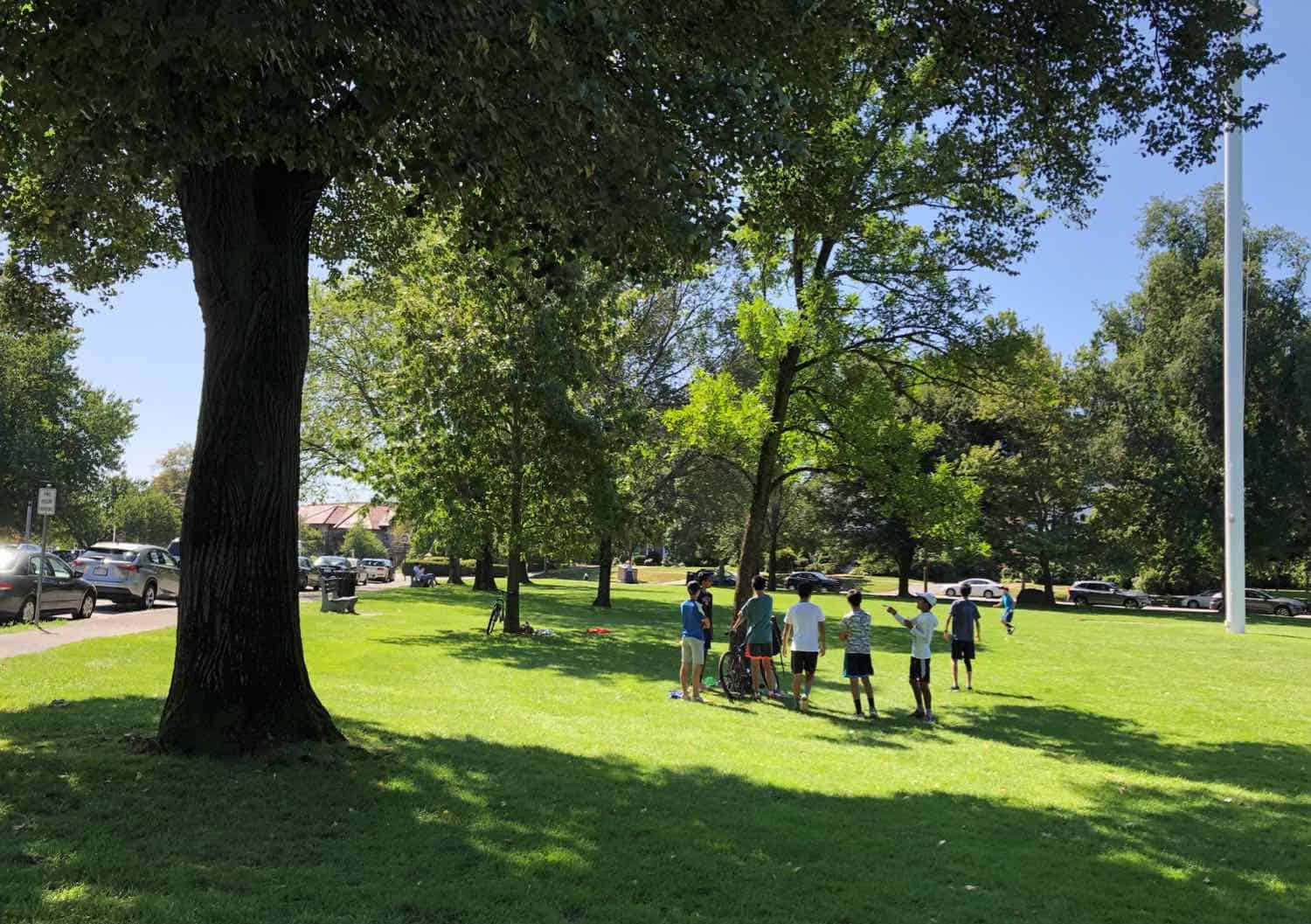
Under the warm, summer sun, the picturesque green—today a public park and also a National Historic Landmark—was filled with children playing soccer. On one side we stopped for a bit to see the Revolutionary Monument, the oldest war memorial in the country, ereted in 1799. Underneath lies the remains of the colonists who lost their lives in the Battle of Lexington.
A statue of Captain John Parker greets all visitors entering Lexington. Sculpted in bronze by Boston sculptor Henry Hudson Kitson, and erected in 1900, the statue honors the captain who led the Lexington soldiers in the battle. He made a striking presence at the street crossing, looking out into the direction from which the British soldiers would advance into town.
Visiting Buckman Tavern, where the locals congregated to plan the war
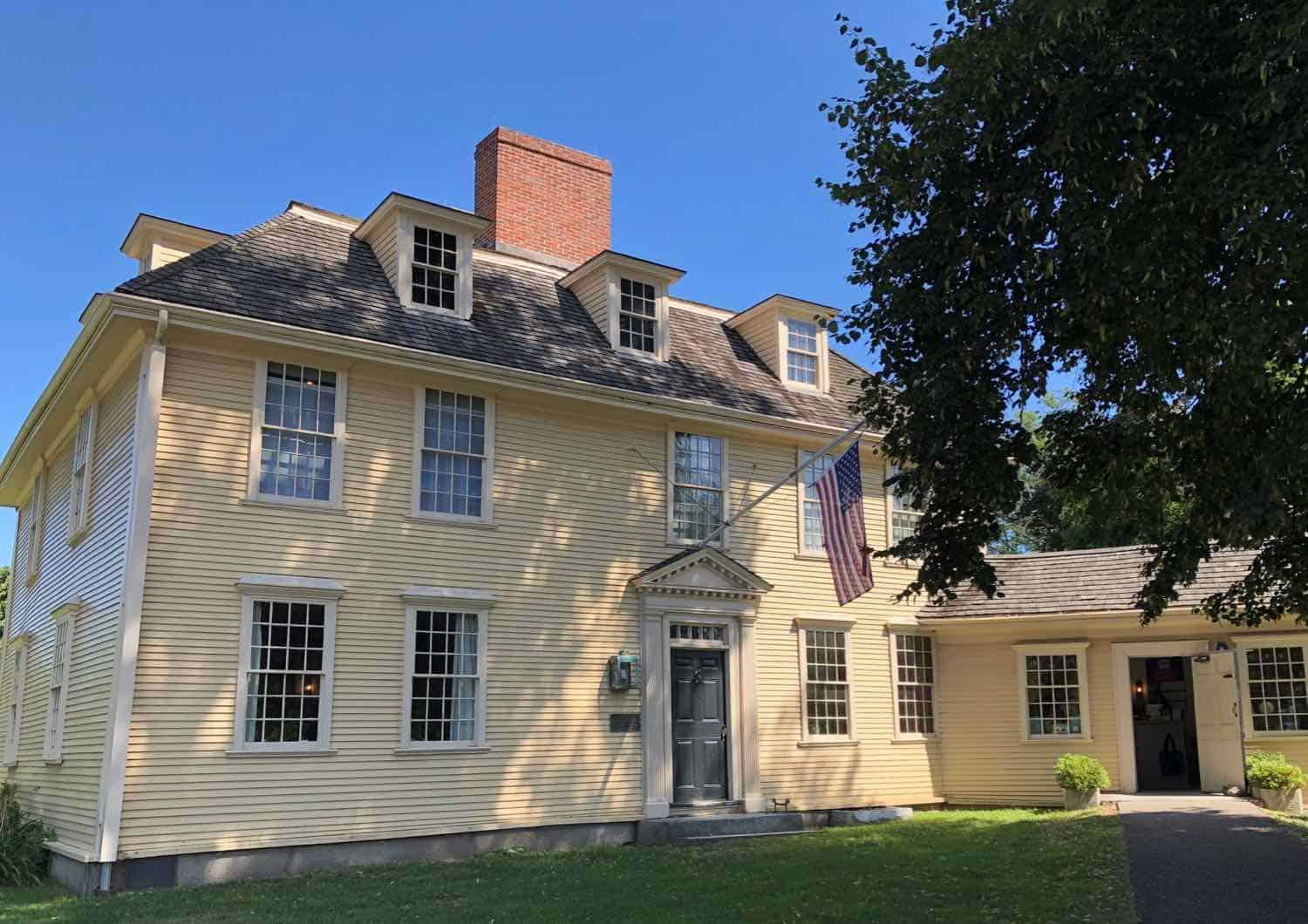
Buckman Tavern, the colonial era building that was used by the Lexington Militia on April 19th, 1775 to gather and prepare to face the advancing British soldiers sits across from Battle Green. Inside we walked through room exhibits of the kitchen, the parlor and dining room.
Then came upon the most important spaces in the museum—the meeting room and the tap room. Our audio guides (free with admission) informed us that this was where the patriots drew up their plans on how to resist the British.
We stared out the tavern window and looked at the battle green like the ordinary townsfolk did that momentous day in April. Then we went upstairs to view a captivating informative exhibition that contrasted the methods of spreading news of the approaching British soldiers in the 18th century to how it would be handled today in our social media infused world.
Discovering the pretty town of Concord
Now quite thrilled and really eager to explore the battlefields of the Revolutionary War, we headed to Concord, just about a twenty-minute drive from Lexington. The quaint, small town of Concord, as we discovered, is perfect for a short break to grab a lunch and a walk while on your way to the site of the epic rebellion that brought forth the American Revolution.

We walked into Helen’s Restaurant, a town stalwart since 1936. The family friendly joint serves delicious burgers, fries, sandwiches and shakes. After satisfying our stomachs, we meandered on the street past local art galleries, jewelry and clothing stores.
We noted the Colonial Inn, dating from 1716, that overlooks historic Monument Square. Yes, you can still book a room or enjoy a meal.
We caught a glimpse of the pretty white steeple of the Trinitarian Congregational Church. Soon it was time to hit the road once more to head out to the locale where a battle led to a war which laid the foundation of this nation.
Traveling through an American Revolution battlefield
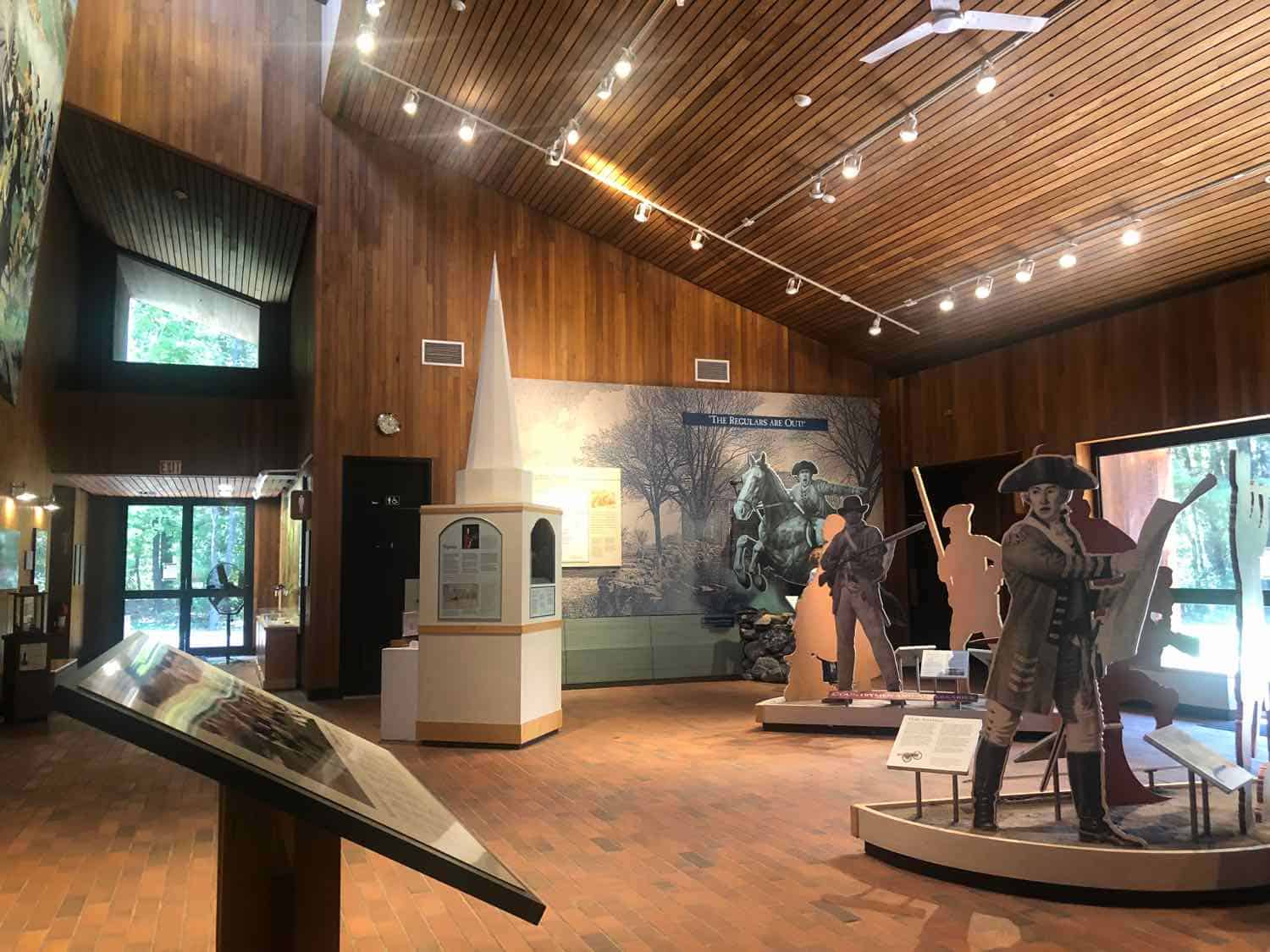
The Minute Man National Historical Park, encompassing many Revolutionary War attractions, stretches along a road that curls from Lexington to Concord. There are many stopping points along the way to help visitors experience this illustrious terrain.
At the Minute Man Visitor Center, an exhibit titled “The Dawn of Revolution” detailed the historic events of April 18th and 19th, 1775. The two historic days brought forth the American Revolution and led to the War of Independence for the United States. If time permits, watch the multimedia show “The Road to Revolution” which highlights the battles of Concord and Lexington.
If you decide to walk the five-mile-long Battle Road Trail, you can see the Paul Revere Capture Site. This is the spot where the famous “Midnight Ride of Paul Revere” came to a halt as he rode from Boston to Concord sounding an alarm about the approaching British soldiers.
Our walk took us to various house sites from that era. We followed the trail map, walking sometimes close to and other times overlapping the original battle road that had been traversed by the British as well as the colonists.
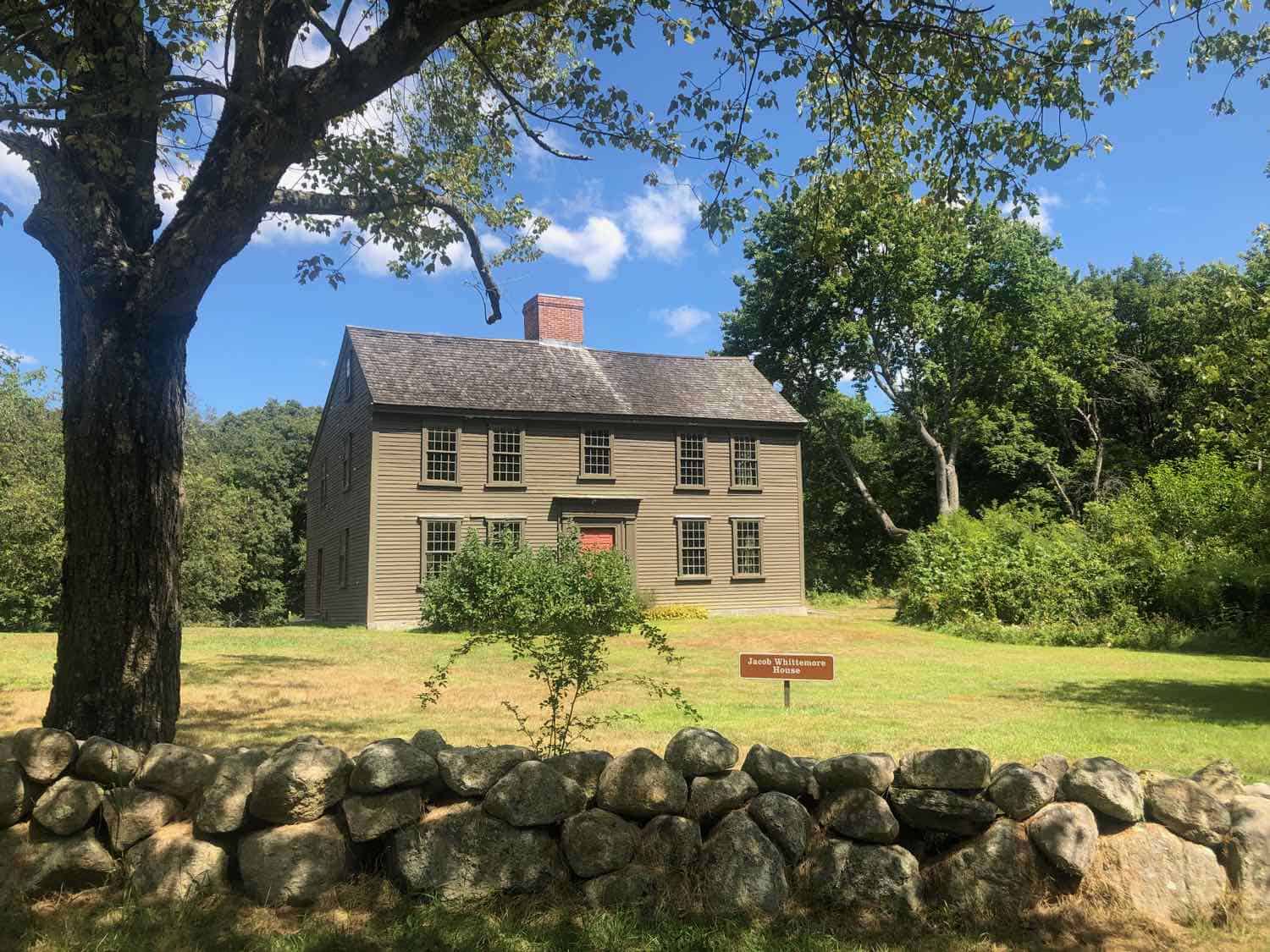
The first house that we stopped to peruse was the Jacob Whittemore House, built in 1716. Identified by the National Park Service as a “witness house”, it’s one of the eleven houses that stands on the battlefield. Though today, some houses are merely marked by stones while others are not open to the viewing public.
Be aware that the trail is one way. We did not have a bike or two cars so we decided to walk half the trail and then proceeded to drive to the North Bridge Visitor Center of the park.
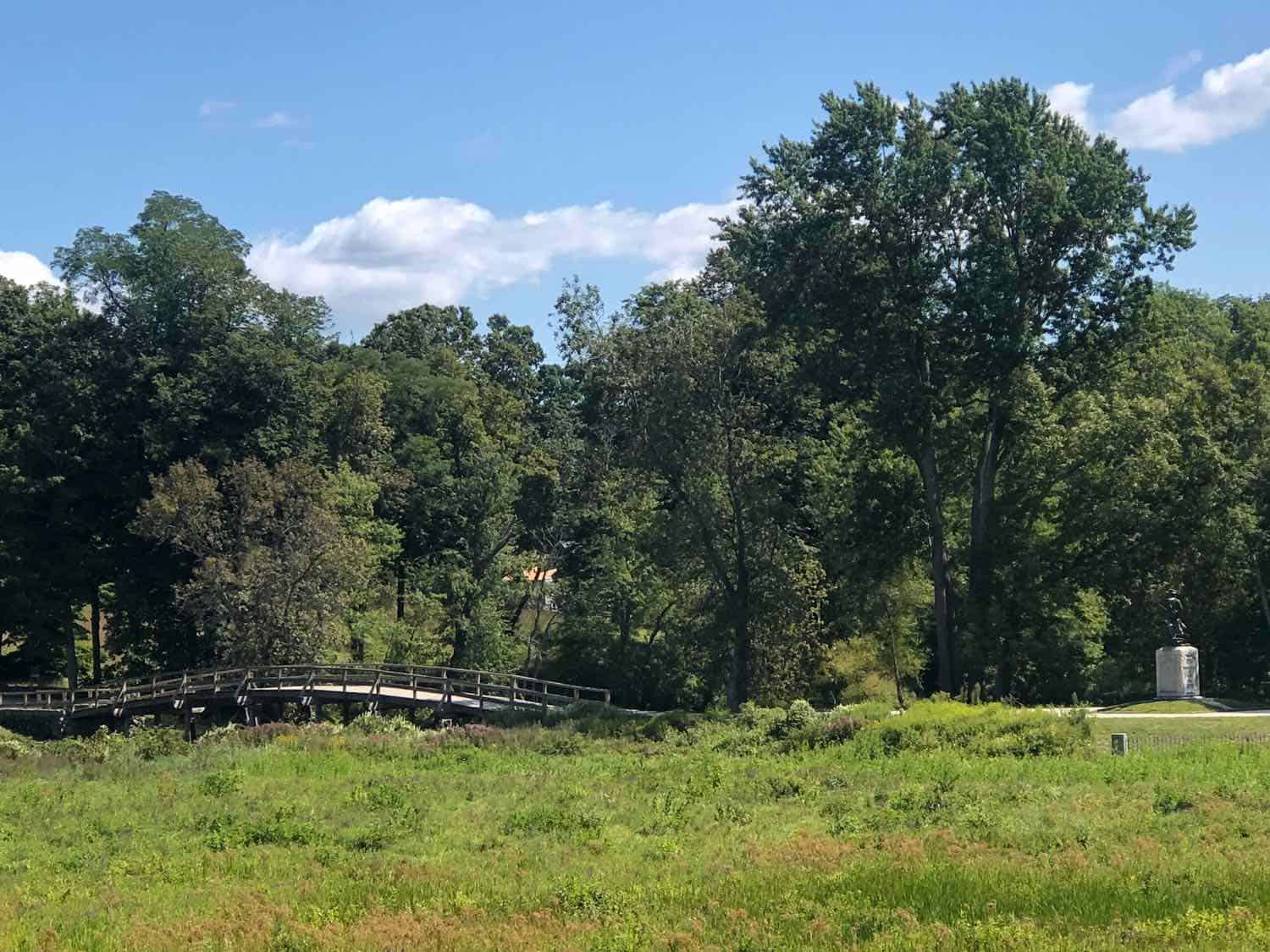
This is the place to visit if you want to see the North Bridge where the colonists and the British soldiers faced one another for the first battle of the American Revolution. Also near the Bridge, take a moment to admire the Minuteman Statue, the adept sculpture by Daniel Chester French, famous for creating the Lincoln Memorial.
The statue commemorates the local militias who first faced and fought the British soldiers thus heralding the start of the Revolution. We spent a short time catching up on the history of the fighting displayed through artifacts and exhibits in the small museum. Then it was time to enjoy the pretty scenery and beautiful gardens.
Seeing the literary houses
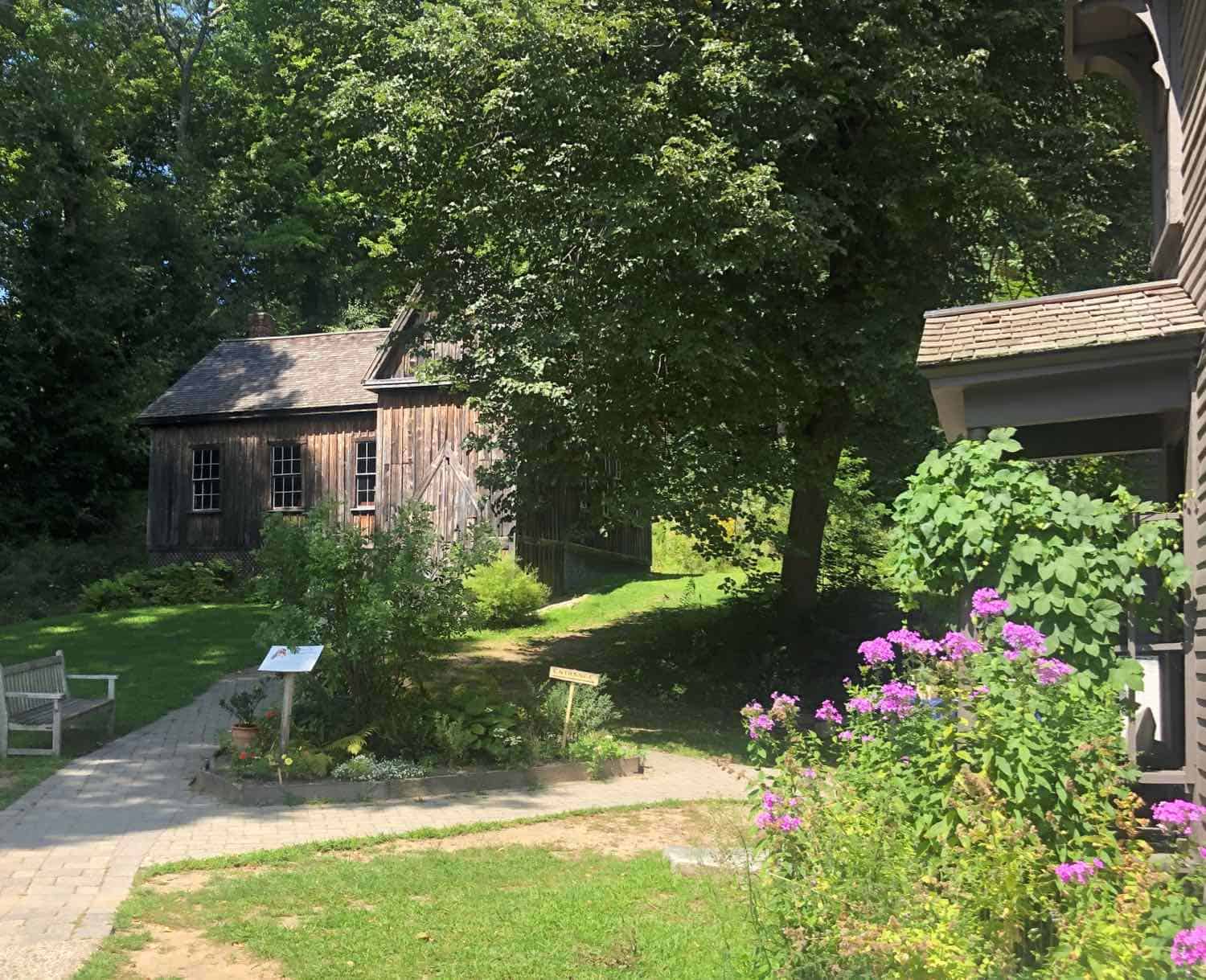
If you are partial to literary classic, Little Women, visiting the home of Louisa May Alcott is a must. This is where she wrote and situated her beloved story in 1868 as well as its sequels.
Orchard House, today a house museum, is open only to guided tours but indoor photography is not allowed. Inside, the house is preserved with period furnishings, original paintings and family portraits, furniture and household items.
Outside, the house is enchanting in its original look. You can partake in the prettiness of the grounds. Note the building where Alcott’s father had opened a school on philosophy with support from admirers such as Ralph Waldo Emerson and Henry David Thoreau.
Little did I know that within a few months, this house would become doubly famous thanks to the latest Hollywood adaptation of “Little Women”.
Close by are the houses of two other American literary giants, also ideal for a short stopover
The first one, The Wayside, is unusual in that it was home to three literary families successively: The Alcotts (1845-1852) called it The Hillside. The author Nathaniel Hawthorne and his family named it The Wayside (1852-1869).
Finally, the children’s book author and creator Harriet Lothrop, along with her daughter Margaret Lotthrop lived here from 1883-1965). Afterward, the house became a part of the Minuteman National Historical Park.
The house of the great American thinker, Ralph Waldo Emerson is just a stone’s throw from the above two literary spots. Inside, the museum showcases original furnishings and memorabilia. While the house was built in 1829, Emerson bought it in 1835 and lived here with his family until he died in 1882.
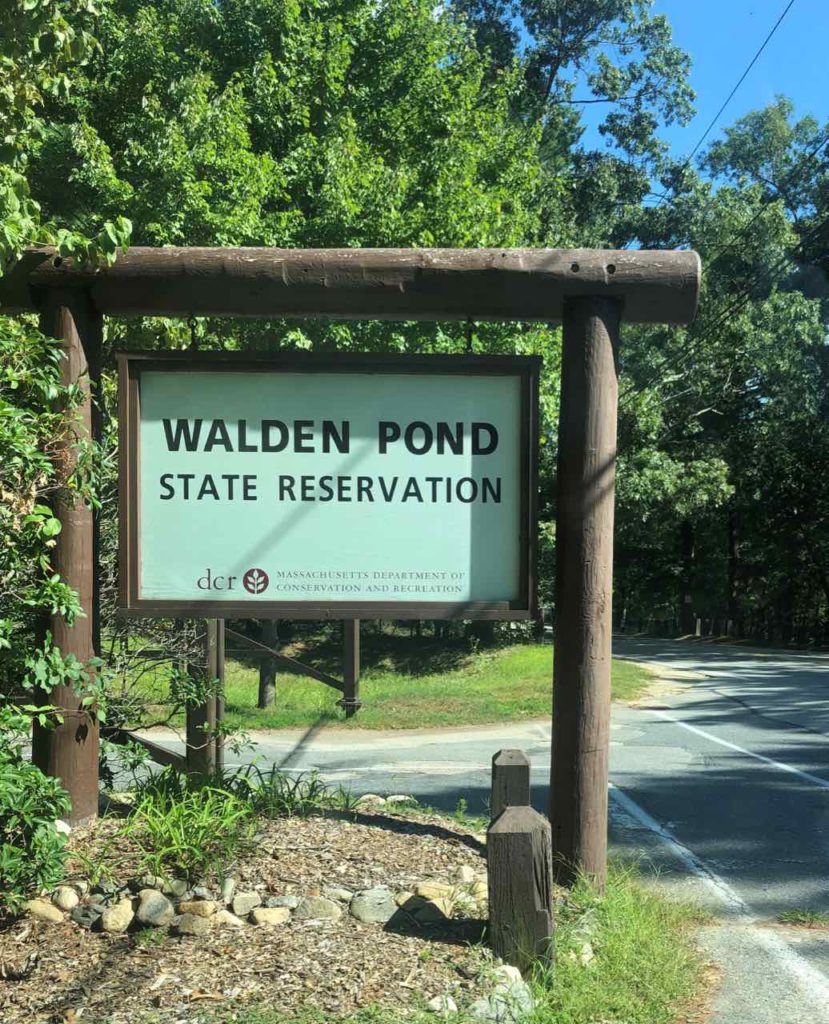
And lastly, along this road, you will come upon the lake immortalized in the writings of Henry David Thoreau, “Walden” or “Life in the Woods”, published in 1854. It’s arguably the best known of Thoreau’s works.
Thoreau’s writing takes its name from Walden Pond. He built a small house on the shores of the serene little pond, where he lived for a little over two years. Today, the lake is part of a state reservation park with hiking trails and offering activities such as swimming and fishing in the summer and skiing in the winter.
At the conclusion of our American history road trip I realized there is no shortage of historic or natural sights to keep you interested if you decide on a day trip from the big city of Boston.
More boomer adventures near Boston:
- Visit Plymouth, Massachusetts, site of the pilgrim’s landing
- Explore the Boston Harbor Islands
- Enjoy the beaches in Hull, Massachusetts


